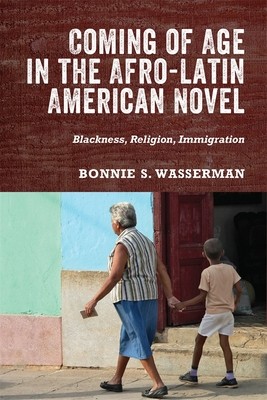
- We will send in 10–14 business days.
- Author: Bonnie S Bonnie Wasserman
- Publisher: University of Rochester Press
- ISBN-10: 1648250289
- ISBN-13: 9781648250286
- Format: 15.5 x 23.1 x 1.5 cm, kieti viršeliai
- Language: English
- SAVE -10% with code: EXTRA
Coming of Age in the Afro-Latin American Novel (e-book) (used book) | bookbook.eu
Reviews
Description
Explores the dimensions of the coming-of-age novel in the Spanish-speaking Caribbean and Brazil, focusing on works by eight major Afro-Latin American writers
The centuries-old European genre of the coming-of-age story has been transformed by contemporary Afro-Latin American novelists to address key aspects of the diaspora in various nations of the Caribbean and Latin America. While attention to Afro-Hispanic and Afro-Brazilian literature has increased in recent decades, few critics have focused specifically on the Afro-Latin American Bildungsroman, and fewer still have addressed novels from both Spanish- and Brazilian-speaking regions, as author Bonnie Wasserman does in this study. The memory and continuing impact of slavery especially shape these coming-of-age stories. Often interwoven with race is a focus on religion, particularly the importance of African folk religions and traditions in the lives of young people. Immigration-and the return journey-is another important theme in the novels. Coming of Age in the Afro-Latin American Novel discusses works&emdash;all published around the turn of the 21st century&emdash;by such important writers as Dahlma Llanos-Figueroa and Mayra Santos-Febres (from Puerto Rico), Conceição Evaristo and Paulo Lins (from Brazil); Teresa Cardenas and Pedro Pérez Sarduy (from Cuba); and Junot Diaz and Rita Indiana (from the Dominican Republic). Wasserman's far-reaching analysis is both rigorous and compassionate, shedding a clear light on ways in which descendants of Africans have experienced life in the New World.EXTRA 10 % discount with code: EXTRA
The promotion ends in 23d.13:46:13
The discount code is valid when purchasing from 10 €. Discounts do not stack.
- Author: Bonnie S Bonnie Wasserman
- Publisher: University of Rochester Press
- ISBN-10: 1648250289
- ISBN-13: 9781648250286
- Format: 15.5 x 23.1 x 1.5 cm, kieti viršeliai
- Language: English English
Explores the dimensions of the coming-of-age novel in the Spanish-speaking Caribbean and Brazil, focusing on works by eight major Afro-Latin American writers
The centuries-old European genre of the coming-of-age story has been transformed by contemporary Afro-Latin American novelists to address key aspects of the diaspora in various nations of the Caribbean and Latin America. While attention to Afro-Hispanic and Afro-Brazilian literature has increased in recent decades, few critics have focused specifically on the Afro-Latin American Bildungsroman, and fewer still have addressed novels from both Spanish- and Brazilian-speaking regions, as author Bonnie Wasserman does in this study. The memory and continuing impact of slavery especially shape these coming-of-age stories. Often interwoven with race is a focus on religion, particularly the importance of African folk religions and traditions in the lives of young people. Immigration-and the return journey-is another important theme in the novels. Coming of Age in the Afro-Latin American Novel discusses works&emdash;all published around the turn of the 21st century&emdash;by such important writers as Dahlma Llanos-Figueroa and Mayra Santos-Febres (from Puerto Rico), Conceição Evaristo and Paulo Lins (from Brazil); Teresa Cardenas and Pedro Pérez Sarduy (from Cuba); and Junot Diaz and Rita Indiana (from the Dominican Republic). Wasserman's far-reaching analysis is both rigorous and compassionate, shedding a clear light on ways in which descendants of Africans have experienced life in the New World.

Reviews